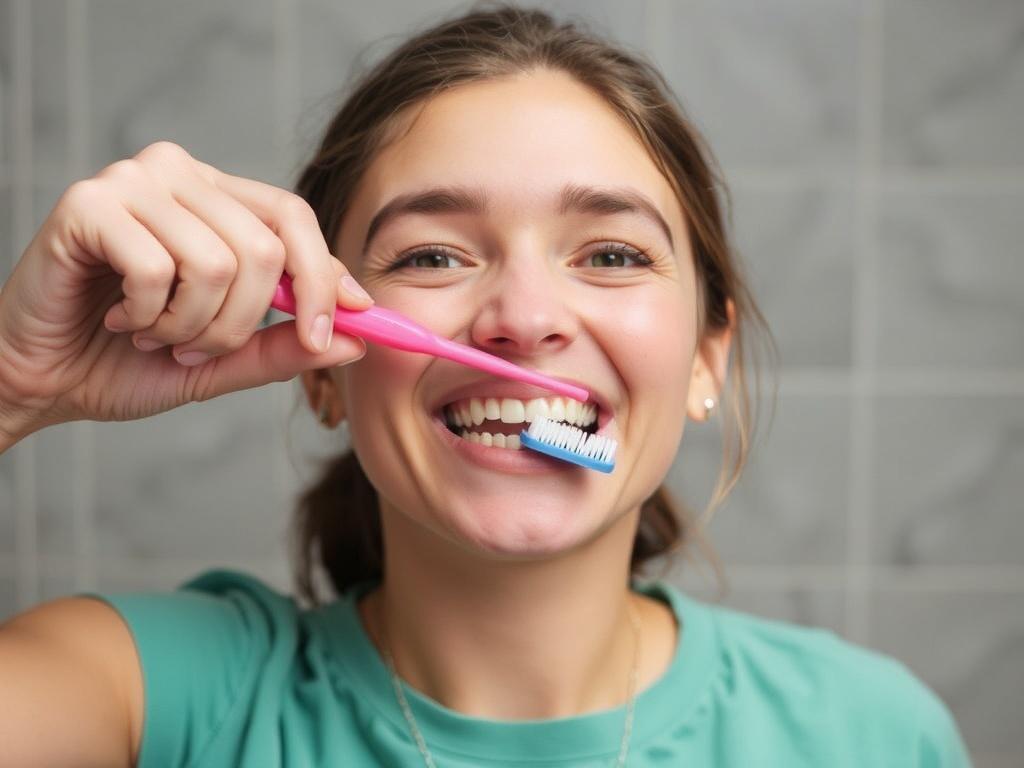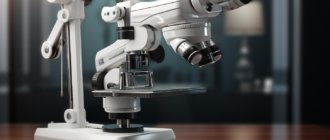Taking care of your teeth and gums might seem straightforward: brush, floss, rinse, and repeat. But the truth is that many people unknowingly make oral hygiene mistakes that could be harming their dental health in the long run. Proper oral care isn’t just about having a bright smile; it’s about preventing painful cavities, gum disease, and even problems that can affect your overall health. If you’ve ever wondered whether you’re really doing all the right things when it comes to your daily routine, you’re in the right place. Let’s dive into the common oral hygiene mistakes you’re probably making, so you can correct them and enjoy a healthier, fresher mouth.
Содержание
- 1 Skipping Brushing or Not Brushing Properly
- 2 Neglecting to Floss or Doing It Incorrectly
- 3 Using the Wrong Toothbrush or Neglecting Toothbrush Hygiene
- 4 Forgetting to Clean Your Tongue
- 5 Not Using Mouthwash or Using It Incorrectly
- 6 Brushing Right After Eating Acidic Foods
- 7 Using Toothpaste Without Fluoride
- 8 Ignoring Your Gums
- 9 Relying Too Much on DIY Teeth Whitening
- 10 Failing to Visit the Dentist Regularly
Skipping Brushing or Not Brushing Properly

One of the most common oral hygiene mistakes is either skipping brushing entirely or not brushing properly. Some people rush through brushing their teeth twice a day, while others brush only once or after meals, thinking that’s enough. However, brushing is effective only when done thoroughly and regularly. Dentists recommend brushing your teeth at least twice a day, ideally for two full minutes each time.
If you’re only brushing for 30 seconds or missing hard-to-reach areas, plaque and bacteria will continue to build up. This can lead to cavities and bad breath. Also, many people use the wrong toothbrush technique—brushing aggressively or in horizontal scrubbing motions—which can wear down enamel and irritate your gums.
How to Improve Your Brushing Technique
- Use a soft-bristled toothbrush and replace it every 3-4 months.
- Hold the brush at a 45-degree angle to your gums.
- Use gentle, circular motions instead of harsh back-and-forth strokes.
- Brush every surface: outer, inner, and chewing surfaces of all teeth.
- Don’t forget to brush your tongue to remove bacteria and keep breath fresh.
Neglecting to Floss or Doing It Incorrectly
Flossing is another critical step in oral hygiene regularly overlooked or done incorrectly. Brushing alone cannot reach the tight spaces between your teeth where food particles and plaque hide. If you think flossing is optional or uncomfortable, you’re making a big mistake. Skipping flossing allows plaque to build in these gaps, which can eventually cause gum inflammation and cavities.
On the other hand, flossing too aggressively can damage your gums, causing bleeding or soreness. It’s important to floss gently and properly.
Proper Flossing Steps to Follow
- Use about 18 inches of dental floss, wrapping most around your middle fingers.
- Hold the floss tightly between your thumbs and index fingers.
- Gently slide the floss between your teeth using a zig-zag motion.
- Curve the floss around the side of each tooth in a “C” shape and slide it beneath the gumline.
- Use clean sections of floss for each tooth.
Using the Wrong Toothbrush or Neglecting Toothbrush Hygiene
Did you know that your choice of toothbrush can greatly impact your oral health? Picking a hard-bristled brush thinking it cleans better is a common oral hygiene mistake. Hard bristles can damage enamel and irritate gums. Soft or medium bristles are generally recommended for most people.
Additionally, people often forget to clean their toothbrush or store it improperly, which can cause bacteria growth on the brush itself. Using a contaminated toothbrush only increases the risk of reinfecting your mouth.
Toothbrush Tips for Better Hygiene
| Tip | Why It’s Important |
|---|---|
| Replace your toothbrush every 3-4 months | Worn bristles clean less effectively and harbor bacteria |
| Store toothbrush upright and allow it to air dry | Prevents bacterial growth in damp environments |
| Avoid sharing toothbrushes | Prevents spread of bacteria and infections |
| Rinse toothbrush thoroughly after use | Removes leftover toothpaste and debris |
Forgetting to Clean Your Tongue
The tongue is often neglected during oral hygiene routines, yet it can house a considerable amount of bacteria and food debris. This buildup can contribute to bad breath and affect the overall cleanliness of your mouth.
Using a tongue scraper or gently brushing your tongue every day can make a huge difference in dental health and how fresh your breath feels. This simple step is frequently overlooked, yet it significantly supports oral cleanliness.
Not Using Mouthwash or Using It Incorrectly
Many people either skip mouthwash entirely or misunderstand its purpose. Mouthwash isn’t a replacement for brushing and flossing but is an excellent supplement to reduce bacteria and freshen breath.
However, some oral hygiene mistakes include using alcohol-based mouthwashes excessively, which can dry out your mouth and irritate tissues, or rinsing immediately after brushing, which can wash away fluoride from toothpaste before it has a chance to take effect.
How to Use Mouthwash Effectively
- Choose a non-alcohol, fluoride-containing mouthwash suited for your needs.
- Use mouthwash after brushing and flossing, but wait at least 30 minutes before rinsing your mouth with water.
- Swish the mouthwash for the recommended time to ensure effectiveness.
Brushing Right After Eating Acidic Foods
You might think brushing your teeth immediately after eating is always the best practice, but this can be a harmful oral hygiene mistake, especially if you’ve consumed acidic foods or drinks like citrus fruit, soda, or wine. Acid softens the enamel temporarily, and brushing right away may cause enamel erosion.
Instead, wait 30 minutes to an hour after eating before brushing to allow saliva to neutralize acids and remineralize the enamel.
Using Toothpaste Without Fluoride
Fluoride is a mineral that helps protect teeth from decay by making the enamel more resistant to acid attacks. Choosing toothpaste without fluoride is a common oral hygiene mistake that can compromise your dental health.
Unless you have a specific health reason advised by a dentist to avoid fluoride, always pick fluoride toothpaste as part of your daily routine for effective cavity prevention.
Ignoring Your Gums
Many focus entirely on their teeth and neglect their gums, but healthy gums are vital for a stable, pain-free mouth. Signs of gum problems include bleeding, swelling, and redness. Some oral hygiene mistakes here include brushing too hard on gums or missing the gumline altogether.
Massaging your gums gently with a soft toothbrush and flossing properly helps stimulate blood flow and clear away plaque that accumulates at the gumline.
Signs Your Gums Need More Attention
- Bleeding during brushing or flossing
- Red, swollen, or tender gums
- Gums pulling away from teeth
- Persistent bad breath
If you notice any of these, scheduling a dental check-up is crucial.
Relying Too Much on DIY Teeth Whitening
Homemade remedies and quick whitening fixes are popular but can sometimes be oral hygiene mistakes. Using abrasive substances like baking soda too frequently or improperly can damage enamel, leading to sensitivity and uneven coloring.
Professional whitening done by your dentist or approved over-the-counter products are safer options. Always consult before experimenting with DIY whitening techniques.
Failing to Visit the Dentist Regularly
Finally, one of the biggest oral hygiene mistakes is skipping regular dental visits. Even with the best at-home routine, only professional check-ups can catch issues early like cavities, gum disease, or oral cancer.
Dentists can provide professional cleanings to remove hardened plaque (tartar) that you can’t get rid of at home. Ideally, visit your dentist every six months or as recommended.
Why Regular Dental Check-Ups Matter
| Benefit | Explanation |
|---|---|
| Early Detection of Problems | Finds cavities, infections, or oral diseases before they worsen |
| Professional Cleanings | Removes tartar and plaque buildup that brushing can’t eliminate |
| Personalized Advice | Get tailored tips for your dental care needs and habits |
| Preventive Treatments | Receive fluoride treatments or sealants to strengthen teeth |
Conclusion
Oral hygiene is about more than just brushing your teeth occasionally and hoping for the best. It involves understanding the right techniques, using the proper tools, and developing habits that support your long-term dental health. By becoming aware of these common oral hygiene mistakes—like improper brushing, neglecting floss, ignoring your tongue, or delaying dental visits—you can adjust your routine and protect your teeth and gums more effectively. Remember, your mouth is the gateway to your overall health, so treating it with care pays off in a brighter smile, fresher breath, and a happier you. Take small steps today to fix these mistakes, and your mouth will thank you for years to come!



